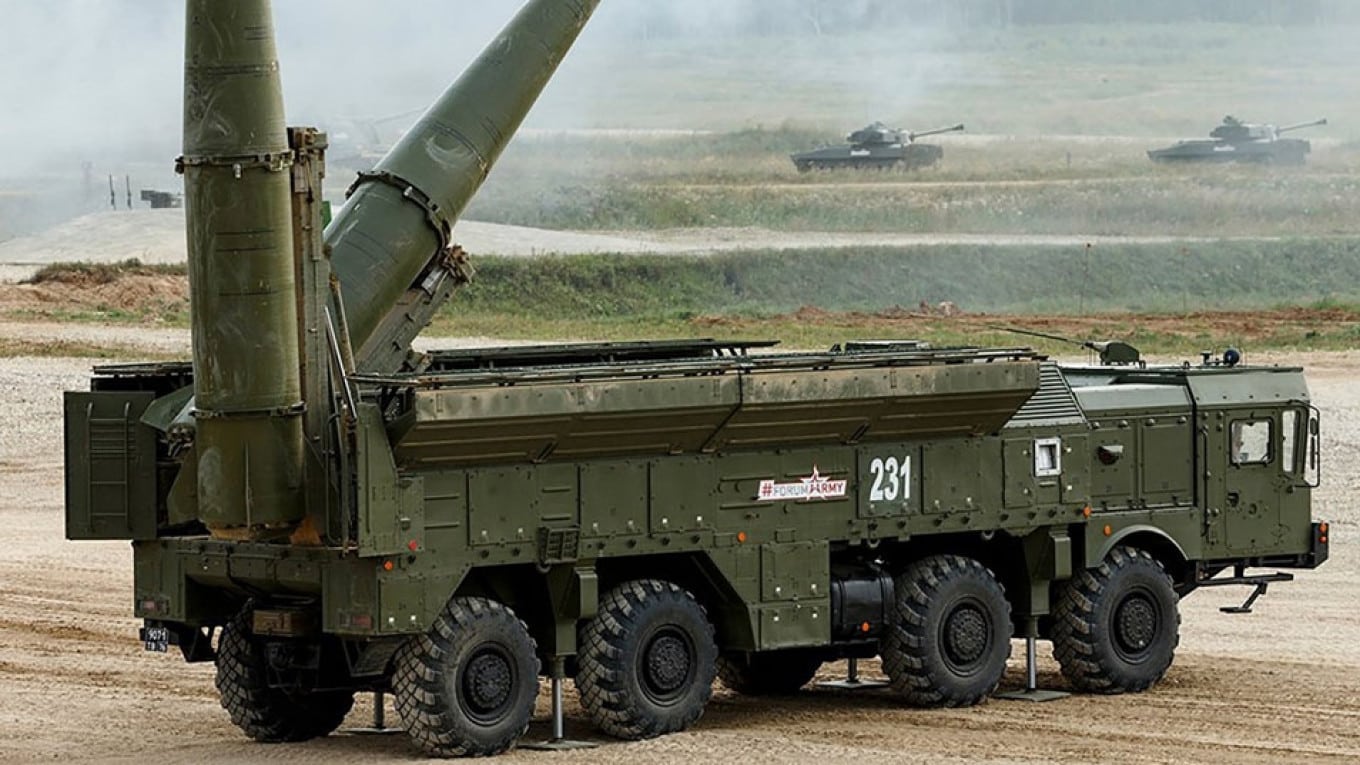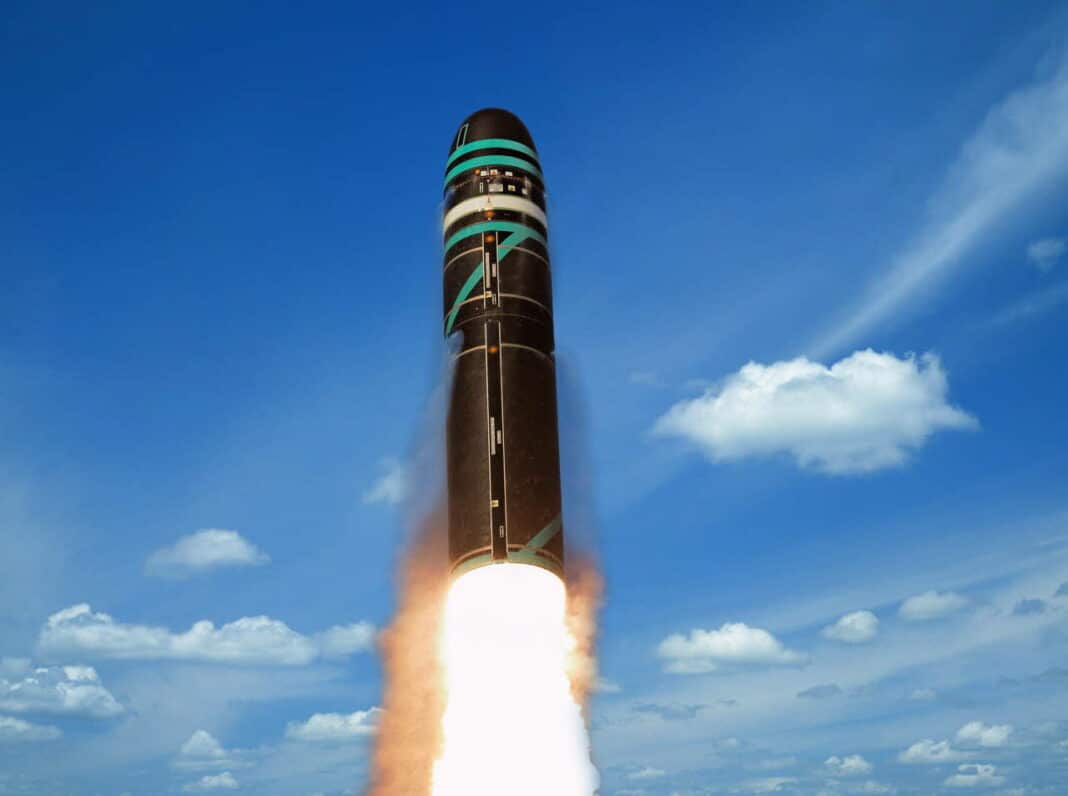It won't have taken long. After the mention, by French President Emmanuel Macron, of the possibility of sending European troops to Ukraine, reactions, often not very favorable, multiplied, in Europe, in the United States, but also within the class French politics. The second knives of Russian communications, for their part, tried to make fun of the threat.
This is not the case for Vladimir Putin. Far from considering the hypothesis, or France, as a negligible quantity, he vigorously brandished the nuclear threat, against France, and especially the whole of Europe, if ever the Europeans came to interfere in "Russian territory", without us really knowing whether or not Ukraine was part of his conception of what Russian territory is, moreover.
Obviously, the Russian president is ready to use his entire arsenal, including nuclear, to convince Westerners to distance themselves from what he considers to be Moscow's sphere of influence, a notion by elsewhere very dynamic in the words of the Russian head of state for 20 years.
In this context, and while American support and protection are hit with uncertainties after Donald Trump's declarations, French deterrence appears to be the ultimate bulwark against Vladimir Putin's ambitions in Europe. The question is: can she do it?
In this section:
Increasingly strong threats from the Kremlin against France and Europe
The threats made against Europe by Vladimir Putin on February 29, while he was speaking to Russian parliamentarians, certainly constitute a particularly muscular response to the hypotheses raised by President Macron at the start of the week. However, they are far from representing a break in the recent Russian position, and even less a surprise.

The Russian nuclear threat has been agitated since 2014 and the capture of Crimea
Already, during the intervention of the Russian armies in Crimea, in 2014, to seize, by surprise, the Ukrainian peninsula, Vladimir Putin had raised the alert level of his nuclear forces, and deployed Iskander missile batteries. M, to prevent any interference from the West.
He did exactly the same in February 2022, when he ordered the offensive against Ukraine, and the start of the now famous “special military operation”, or special military operations in Russian (CBO), announcing, again, the increased alerting of strategic air forces and rocket forces.
A firm response from Western deterrence in February and March 2022
The effectiveness of this measure was, however, less effective than during the capture of Crimea, when Europeans and Americans alike remained frozen, wondering who "these little green men" could be, who had taken over this Ukrainian territory, from Russian bases and landing ships.
In 2022, under the leadership of the United States, Great Britain, and especially Eastern European countries, such as Poland and the Baltic States, Western military aid was organized in support of Ukraine, with the transfer of increasingly efficient equipment, first anti-tank and anti-aircraft infantry missiles (February 2022), then armored vehicles from the Soviet era (March 2022), followed by the first armored vehicles and Western artillery systems (April-May 2022).
At the same time, the three Western nuclear nations, the United States, Great Britain and France, responded to the alerting of Russian nuclear forces by strengthening their own means of deterrence, in a standoff that the world had not seen since 1985 and the end of the Euromissile crisis.

Thus, in March 2022, four weeks after the start of the conflict, France announced that it had three nuclear missile submarines at sea, in a completely unique and exceptional response since the end of the Cold War.
Threats that bore fruit to contain the delivery of weapons to Ukraine
Despite the firmness of the Western strategic response, the Russian threat bore fruit. It took more than a year for Westerners to agree to deliver modern heavy armored vehicles to Ukraine, such as infantry fighting vehicles (Bradley, Marder, CV90), or combat tanks (Leopard 2, Abrams, Challenger 2).
It took a year and a half for them to deliver long-range munitions (Storm Shadow and Scalp-Er..), and more than two years for the first F-16 combat planes to arrive in Ukraine ( which is not yet the case). This is certainly the reason which convinced Moscow to persevere in this direction.
Thus, in March 2023, the head of US Strategic Command, Admiral Charles Richard, estimated that we should expect, in the months and years to come, that Moscow, like Beijing, is increasing its attempts at nuclear blackmail, in particular against countries without resources, which are much more sensitive to this type of threat.


75% of this article remains to read,
Subscribe to access it!
The Classic subscriptions provide access to
articles in their full version, and without advertising,
from 6,90 €.
Newsletter subscription
Register for the Meta-Defense Newsletter to receive the
latest fashion articles daily or weekly


Hello Mr Wolf.
As always, an impartial and objective analysis of the powers displayed and their respective doctrines explained.
History is only an eternal beginning and forgetting it is only an opportunity to see it repeat itself. My comment is only a commonplace but your reflections should be read by so many of these commentators and other "information feeders", not to make doctrine but simply to fuel a certain spirit of synthesis which would allow a better reading of such an uncertain future (commonplace as I told you above but surely necessary….)
Thanks again for your site.
JLG
Good evening and thank you for this comment, very encouraging)
The Russian side still suffers from a lack of perspective on the material actually available.
The costs of maintaining 6000 nuclear warheads are reasonably unlikely to fit into Russia's overall budget. Afterwards if removing a little rust and putting them in a launcher makes them operational…….
very just !
Hello,
Thank you very much for your article which is very interesting.
Let me ask myself the following question which intrigues me regarding deterrence. You rightly bring up the concept of mutually assured destruction. But today, does anti-missile technology (e.g. Mamba or S400) not alter the concept of this “assured” destruction?
Thank you very much for your answer.
cordially
SB
All anti-ballistic systems, the S400, the SAMP/T Mamba, the Patriot, the THAAD or the Arrow 3, have a determined firing envelope. The S400/Patriot/Mamba/SM6 are endo-atmosphere systems, which can only intercept descending trajectories, against specific ballistic missiles, with a range ranging from 500 to 1500/2000 km. Exo-atmospheric systems, such as the S500, the THAAD, the Arrow 3 or the SM3, are capable of intercepting ballistic targets outside the atmosphere, with a latitude ranging from 70/80 to 200 km, depending on the models. . Unfortunately, all these systems find themselves in great difficulty countering intercontinental ballistic trajectories, ICBMs or SLBMs. It's not impossible, but the battery must be positioned in exactly the right place to hope to succeed. What's more, they must launch several missiles per warhead. So, in fact, no one considers that ABM (anti-ballistic missile) shields can be really effective against strategic fire. On the other hand, they can be used against short-range to medium-range missiles (up to 5 km range).
Very interesting.
Thank you very much.
SB
Nuclear deterrence, French or otherwise, is only as good as the will of those who have the power to implement it and their credibility on the international level.
Hence the weakness of the British subject to the double key regime for the use of nuclear weapons.
There are no double keys in British deterrence. This is a myth often repeated, even by senators, but it is completely false.
The British deterrent uses Trident D5 missiles from Lockheed Martin, but independently. Only the British can arm their nuclear warheads, designate their targets, and give the firing order. The British deterrent depends on the USA to maintain its missiles, but that's it, and there is absolutely no double key. As a reminder, the air component of French deterrence relies on the E-3F Sentry and the KC-315 remaining in service, which also depend on the United States for parts. And in naval aviation, it depends on the E-2C Hawkeye, from Grumman.
Moreover, there is no double key for NATO B-61s either. Only the United States can arm them, and NATO designates the targets. The air forces of the host countries are only the carriers. At worst, they can refuse to carry out the mission.